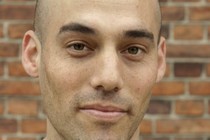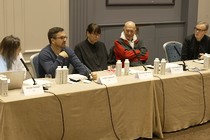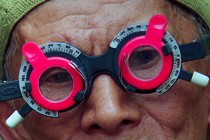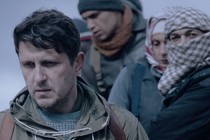The Look of Silence: the act of killing again
- VENICE 2014: Following up on his multi-award-winning documentary, Joshua Oppenheimer adopts a more conventional tone based on the confrontation between the family of a victim and his executioner
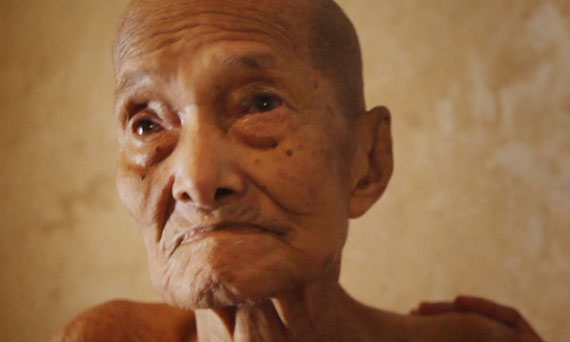
The 71st edition of the Venice Film Festival has welcomed the new documentary by Joshua Oppenheimer, the director of 2012’s The Act of Killing [+see also:
trailer
film profile], into its competition with open arms. Though The Look of Silence [+see also:
trailer
film profile] logically does not succeed in outclassing its predecessor on its own patch, it is still a hard-hitting denouncement of the Indonesian massacre that took place in the latter half of the 1960s. Its more methodical and repetitive structure does not save it from a number of monotonous parts, but it still proves to be an absolutely remarkable piece of documentary work.
In 1965, following a military coup d’état and a relentless torrent of propaganda, the army encouraged the population to exterminate one million Indonesians who were classed as communists. Ramli was one of the victims. His neighbours snatched him away from his mother and beat him, stabbed him, disembowelled him and finally castrated him, then watched him bleed to death. This was just one amoral crime among a million others, which the perpetrators remember with a sense of pride. The director filmed them some ten years ago, while he was preparing The Act of Killing. We see them graphically re-enacting the murder using humour, miming their gestures with panache. Forty-something Adi was born two years after the death of his brother Ramli, whose demise is depicted in the videos that he watches, emotionless, on a small TV screen. The documentary follows this optician’s confrontations with the murderers, who are also his neighbours and sometimes even members of his own family who still live in his village and have positions of power there, enjoying complete impunity. Through these interviews, we are chilled by the complete lack of regrets and the glorified descriptions of the genocide by elderly individuals who attribute their unspeakable acts to the shadow cast by ridiculous propaganda, which is still rolled out today in the country’s schools. One leader from the Komando Aski (civil militias) of that time admits that all these murders could potentially drive people mad – unless, like he and many others did, they drank two large glasses of their victims’ blood every day in order to remain strong and stop themselves from going crazy.
Oppenheimer films the suffering endured by the family — Adi and his parents — but he also captures the dignity of a man who, despite everything, is seeking to forgive his neighbours, without showing even a hint of vengeance. But how can he bestow forgiveness upon people who feel in no way responsible for the atrocities that they committed? Even when we see the leaders of the legislative assembly — who have been elected and re-elected for over 40 years — people hide behind hierarchies or the tangled mess of politics (“It’s not a crime, it’s politics”). The propaganda is distorting history to turn it into a “spontaneous movement by a population who hated communism” – there is total manipulation. Families don’t want to know anything about the past that is fading away with the previous generation, and nor do they realise what that generation has passed down to them: the risk of history repeating itself, putting wheels in motion that have never been called into question.
The Look of Silence is a production involving Denmark, Finland, Indonesia, Norway and the UK, which sees Werner Herzog and Errol Morris participating as executive co-producers; but above all, it is the baffling number of anonymous faces that stand out in the credits, so many names hidden because of the fear of reprisals by an authority that is still firmly established in the country.
(Translated from French)
Did you enjoy reading this article? Please subscribe to our newsletter to receive more stories like this directly in your inbox.

















